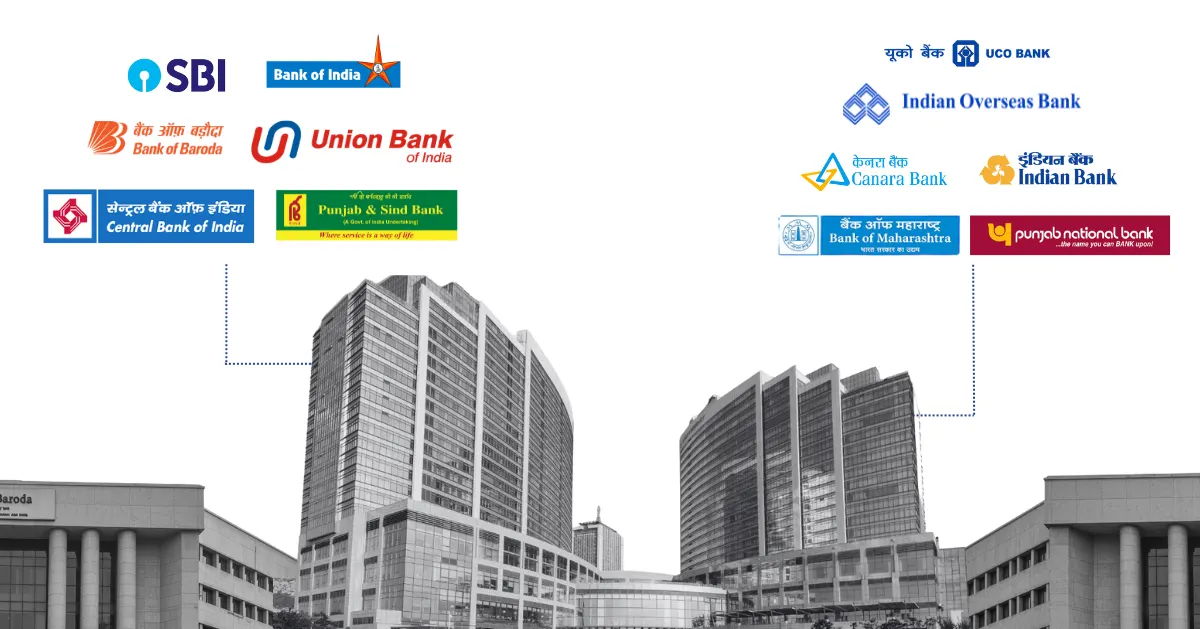
Introduction
In the fast-growing e-commerce industry, particularly in India, Return to Origin (RTO) has emerged as one of the most significant challenges for businesses. As the market expands, online retailers are increasingly grappling with the complex logistical issues that Return to Origin presents. RTO refers to the process where a shipped product is returned to the seller or manufacturer after failing to reach the intended customer.
This problem not only impacts the supply chain but also complicates logistics operations, leading to operational challenges and affecting business continuity. For businesses that rely on smooth operations, understanding and managing RTO becomes essential to maintaining a profitable and sustainable e-commerce model. In this article, we’ll explore the causes of RTO, its implications on businesses, and strategies for reducing it.
What is Return to Origin (RTO) in E-commerce?
Return to Origin is a term used to describe the situation when a product that has been dispatched for delivery is returned to the seller or manufacturer. This happens due to delivery failures, customer rejections, or logistical inefficiencies. In India’s rapidly expanding e-commerce market, RTO has become a recurring issue, which is tied to various origin issues like incorrect addresses, customer unavailability, and inefficient delivery systems.
Return to Origin highlights gaps in supply chain management, where logistics can’t function seamlessly, and businesses face operational challenges. By addressing origin issues proactively, businesses can not only reduce RTO instances but also enhance their business continuity by keeping customers satisfied and ensuring timely deliveries.
How Does Return to Origin Impact Businesses and Logistics?
The implications of RTO stretch far beyond just financial losses; they affect multiple facets of e-commerce operations:
- Increased Operational Costs: Handling returns creates extra expenses in reverse logistics, transportation, and warehousing. These costs disrupt the supply chain and add unnecessary strain on logistics systems.
- Delayed Customer Satisfaction: When an order is returned to origin, it causes delays in fulfilling the customer’s order. This hampers customer satisfaction, leading to a negative customer experience that disrupts business continuity.
- Inventory Management Issues: Returned goods need inspection, repackaging, or even disposal. These processes take time and resources, leading to operational challenges in managing inventory and supply chain logistics.
- Damage to Brand Reputation: If Return to Origin instances increase, it can damage a company’s reputation. Customers may become frustrated with delayed deliveries and inconsistent service, which can result in lost customers and a deteriorating brand image.
Each of these impacts needs to be addressed, particularly origin issues, to ensure the efficiency of logistics and minimize disruptions in the supply chain.
Common Reasons for RTO in Online Shopping
Understanding the root causes of Return to Origin is critical in developing strategies to reduce its occurrence. Some of the most common reasons for RTO include:
- Incorrect or Incomplete Address: One of the leading causes of RTO, incorrect or incomplete addresses leads to delivery failures. Address verification systems can help reduce origin issues and ensure accurate deliveries.
- Customer Unavailability: In India, customers are often unavailable during the time of delivery. Missed deliveries lead to RTO, which increases operational challenges within the supply chain.
- Product Quality Concerns: When a product arrives damaged or doesn’t meet customer expectations, it might be rejected and returned, contributing to rto issues.
- Change of Mind: Sometimes, customers simply change their minds after purchasing a product. This change of heart can cause the product to be returned to the seller.
- Delivery Delays: Customers may cancel their orders if they experience delays in receiving their products, leading to Return to Origin.
Each of these reasons is closely tied to operational challenges and origin issues that can disrupt the supply chain and logistics.
How to Reduce Return to origin (RTO) Rates in E-commerce?
Reducing RTO rates is a multifaceted challenge that requires addressing both customer behavior and operational challenges within the supply chain and logistics systems. Here are some strategies that can help:
- Improve Address Verification: Use advanced address validation tools to reduce origin issues. Ensuring that customers provide accurate delivery details minimizes failed deliveries.
- Enhance Communication: Maintaining proactive communication with customers regarding order status and delivery schedules can prevent issues related to customer unavailability, thus reducing RTO occurrences.
- Efficient Reverse Logistics: Implement a robust reverse logistics system that quickly processes returns and reintroduces products into the supply chain with minimal delays. This is crucial for maintaining business continuity.
- Real-Time Tracking: Using real-time tracking systems gives both businesses and customers visibility over the delivery process. It helps in preemptively addressing delivery issues, reducing RTO occurrences.
- Customer Education: Educating customers on the importance of timely availability and providing accurate delivery information can reduce the frequency of Return to Origin incidents.
- Flexible Delivery Options: Offering customers multiple delivery slots or delivery methods can reduce customer unavailability and improve delivery success rates, reducing the likelihood of Return to Origin.
Implementing these strategies will not only help reduce RTO rates but will also smoothen logistics operations and reduce the operational challenges that come with them.
Costs Associated with Return to Origin and Their Impact on Profitability
The financial implications of Return to Origin are significant. Here are the major costs involved:
- Reverse Logistics Costs: Managing returns requires additional shipping, storage, and processing costs. These expenses increase operational costs, which affect the overall profitability of the business.
- Increased Operational Challenges: Reverse logistics adds steps to the supply chain, making the process inefficient and costly.
- Lost Revenue: RTO leads to lost sales as products are returned to the warehouse instead of reaching the customer, which affects business continuity and overall revenue.
- Repackaging and Restocking: Returned items often need to be repackaged or refurbished, further adding costs to the process.
- Customer Service Expenses: Managing customer complaints and handling returns increases the workload for customer service teams, leading to additional costs.
These costs, while unavoidable to some extent, can be mitigated by addressing origin issues and reducing RTO rates, ensuring that profitability is maintained.
Best Practices for Managing Returns Efficiently
- Streamline Reverse Logistics: A seamless reverse logistics process can reduce the time and cost involved in managing returns. This ensures that the supply chain remains efficient and minimizes disruptions to business continuity.
- Leverage Technology: Use data analytics and automation tools to identify patterns in Return to Origin and optimize your processes accordingly.
- Improve Inventory Management: Effective inventory management ensures that returned items are quickly processed, inspected, and reintroduced into the supply chain.
- Employee Training: Train employees to handle returns effectively and reduce inefficiencies in logistics.
- Partner with Reliable Logistics Providers: Collaborating with trusted logistics partners ensures that both forward and reverse logistics are handled smoothly, helping to maintain business continuity.
By adopting these practices, businesses can effectively manage Return to Origin, overcome operational challenges, and enhance the overall supply chain efficiency.
Conclusion
The challenge of Return to Origin in Indian e-commerce cannot be ignored. It impacts every aspect of the business, from logistics to supply chain management and ultimately to business continuity. Understanding the root causes of Return to Origin, addressing origin issues, and implementing efficient systems for managing returns can help mitigate its effects. With the right approach, businesses can reduce RTO rates, lower operational costs, and improve customer satisfaction, leading to better profitability and long-term success.
At RegisterKaro, we specialize in offering solutions for businesses grappling with return to origin, supply chain issues, logistics, and other operational challenges. We provide tailored services to help your business navigate these complexities and ensure business continuity. Contact us today at support@registerkaro.in or call +918447746183 to learn more about how we can help you optimize your logistics and reduce Return to Origin.
Frequently Asked Questions (FAQs)
- What is Return to Origin in e-commerce?
RTO refers to a process where products are returned to the seller after delivery attempts fail or customers reject the items. - How can I reduce Return to Origin rates?
Implementing accurate address verification, better communication with customers, and efficient reverse logistics can significantly reduce RTO rates. - What impact does Return to Origin have on the supply chain?
Return to Origin disrupts the supply chain, causing delays, increasing costs, and leading to inventory management issues. - How does Return to Origin affect profitability?
RTO leads to higher operational costs, lost revenue, and extra expenses for handling returns, which can hurt overall profitability. - What are the common causes of Return to Origin?
Common causes include incorrect addresses, customer unavailability, product defects, and delivery delays. - Why is Return to Origin a bigger issue in India?
The Indian e-commerce market faces unique operational challenges, such as vast geographical distances and address inaccuracies, making RTO more prevalent. - What is reverse logistics, and how does it help with Return to Origin?
Reverse logistics involves the process of handling returned goods and reintroducing them into the supply chain efficiently, helping reduce Return to Origin rates. - How can technology help manage Return to Origin?
Technologies like real-time tracking and automated systems can help identify and resolve origin issues faster, reducing Return to Origin occurrences. - What role does customer service play in managing Return to Origin?
Effective customer service can reduce RTO by addressing customer concerns, offering alternatives, and improving communication during the delivery process. - What are the best practices for handling returns?
Best practices include streamlining reverse logistics, leveraging technology, and improving inventory management to handle returns efficiently and reduce Return to Origin.




